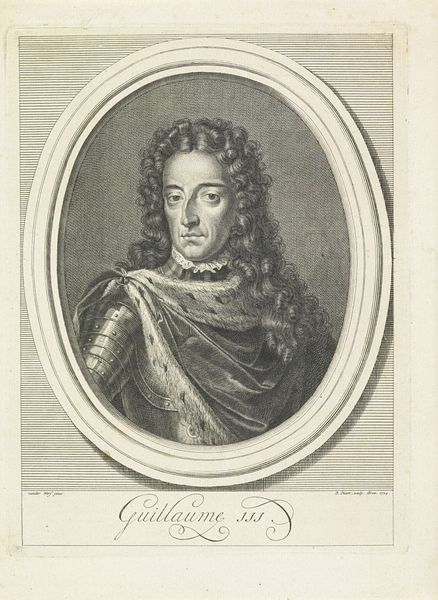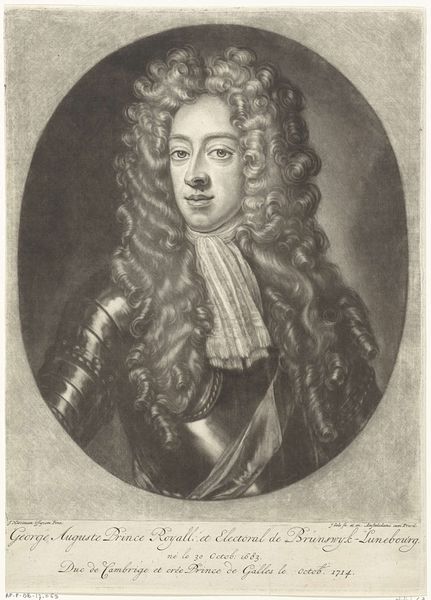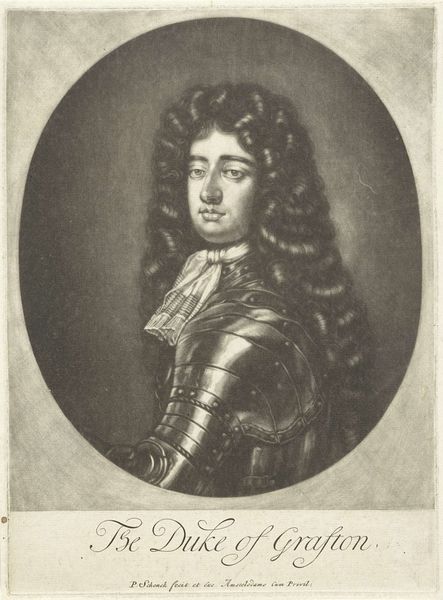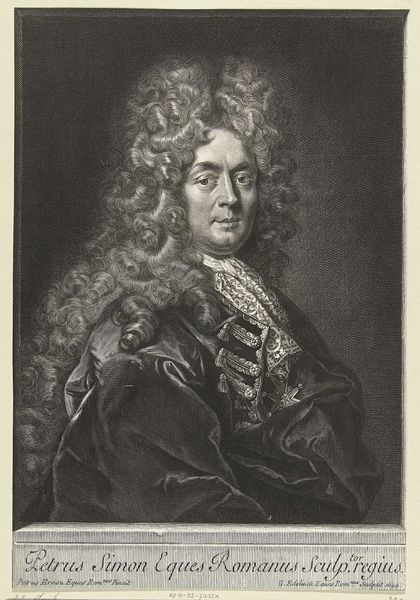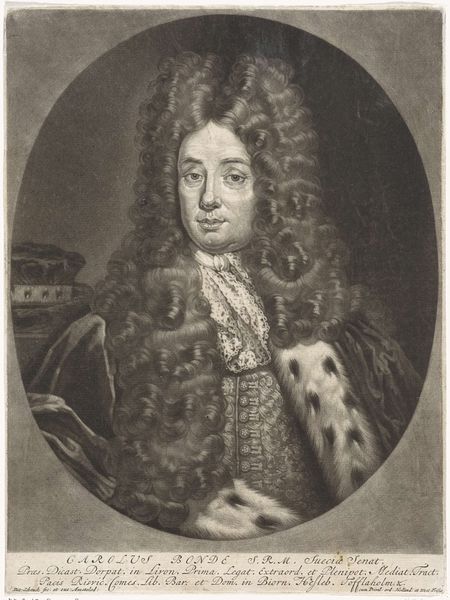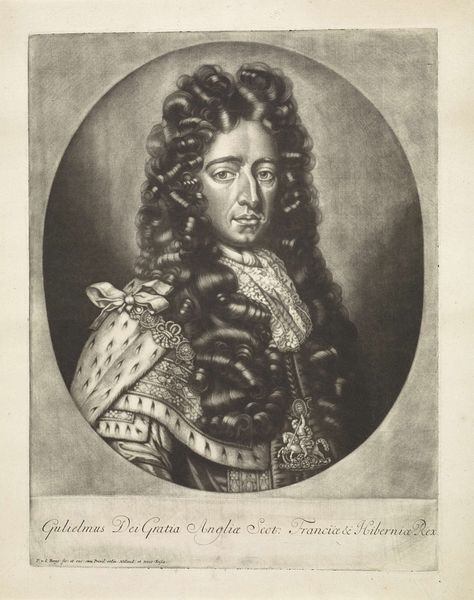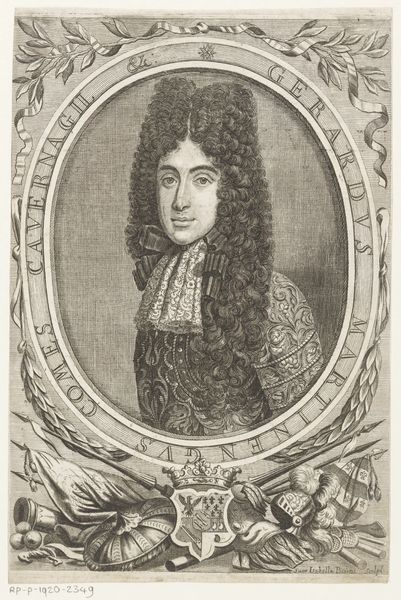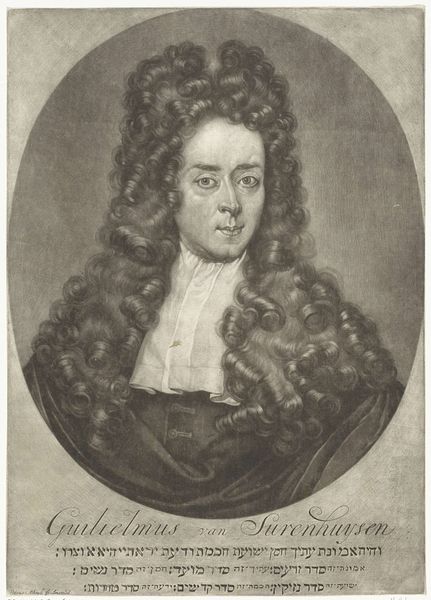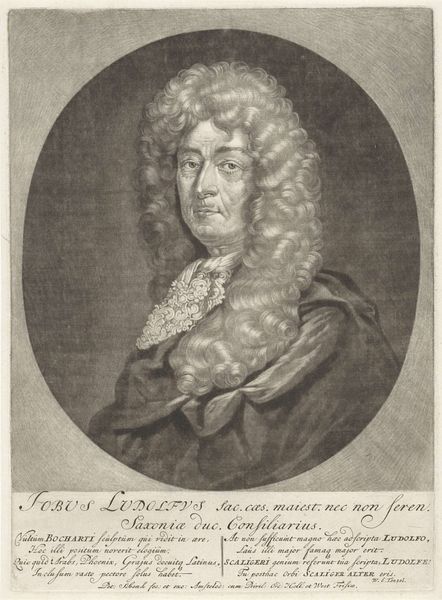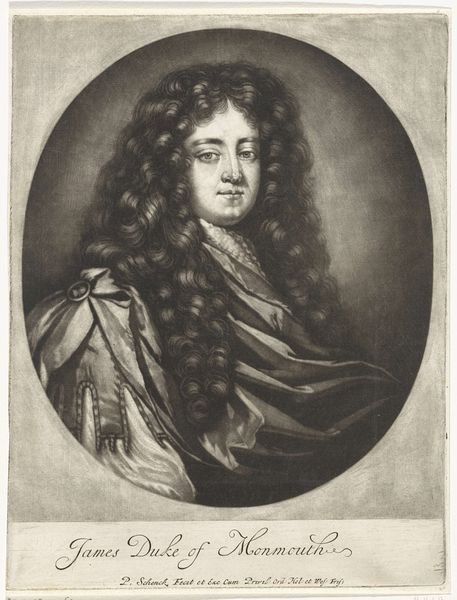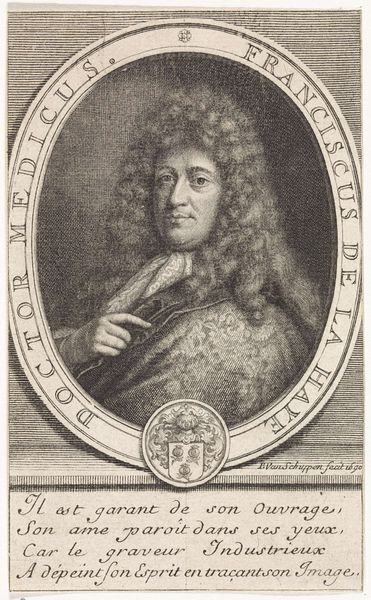
engraving
#
portrait
#
baroque
#
engraving
Dimensions: height 191 mm, width 134 mm
Copyright: Rijks Museum: Open Domain
Curator: Well, this portrait has an air of authority and maybe even a little arrogance about it. Editor: Perhaps, but to me, it conveys more about the performativity of power than any inherent quality. This is "Portret van Jacobus II, koning van Engeland", or "Portrait of James II, King of England" made between 1670 and 1713, now at the Rijksmuseum. The artist is Pieter Schenk, who created this print using engraving techniques. Curator: Ah, engraving! Looking closely, the lines creating texture in the wig, the lace... It’s meticulous, painstaking. One can imagine the hours of labor involved. I mean, what does it even mean to reproduce the symbols of royal power? Editor: Exactly. This image was made and circulated at a crucial period in British history when anxieties over succession were particularly high. Look at how James II is presented, draped in finery, every strand of his wig in place, meticulously rendered with that engraving you mentioned. All signifiers of legitimacy, particularly as his Catholicism sparked so much conflict and ultimately, his removal from the throne. Curator: So, in effect, this relatively reproducible format – prints – becomes another medium to propagate that brand. Think about the economics involved. It allowed wider distribution. Editor: Precisely, and this particular portrayal has to be interrogated given James II’s controversial and polarizing reign. The print normalizes his reign, and also perpetuates harmful power structures tied to colonialism. Even details that seem stylistic contribute – for instance, that classical oval evokes ideas of continuity, tradition. The lace represents access to raw materials from overseas… nothing about this is neutral. Curator: So, a lot of messaging baked into what looks at first like simply... a fancy man in a fancy wig. Considering how widespread prints like this became, you wonder how that shaped public sentiment? Did the medium change the message? Did its material accessibility democratize royal image? Editor: Those are pertinent questions. Perhaps seeing this now helps us examine our assumptions regarding imagery from earlier historical moments, and who these representations are designed to benefit. Curator: Definitely gives new layers to what I initially perceived as "arrogance." It’s really a master class in controlled messaging.
Comments
No comments
Be the first to comment and join the conversation on the ultimate creative platform.


